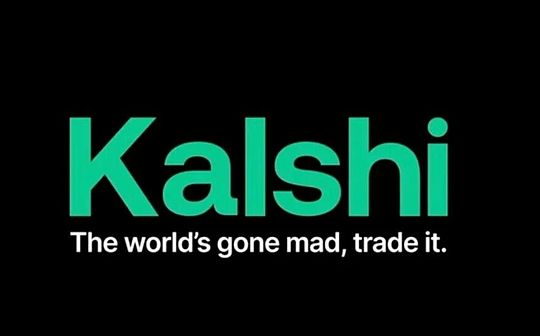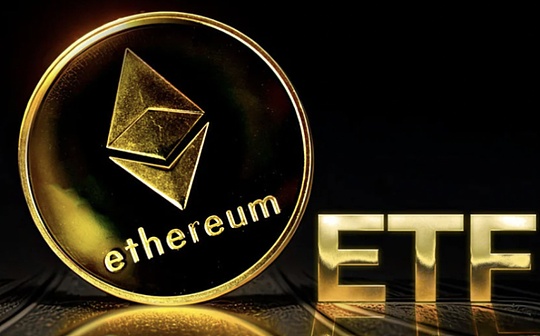
Author: E2M Research, Steven Source: mirror
Looking back at Ethereum Futures ETFs feel that it is still a bit hasty through this matter. Ethereum is much more complicated than Bitcoin.The reason why Ethereum was rejected will definitely have an example of applying for spot ETFs in future crypto assets.However, in the traditional world, there will also be pork ETFs, oil ETFs and other commodities with particularly wide use scenarios, with ETF products.
-
CM: Whether the spot ETF passes or not depends on the technical level (POS or POW).Technology guidance is centralized, and the network is decentralized.Ethereum cannot pass, which means that subsequent crypto assets cannot pass, because from the perspective of decentralization, except for Bitcoin, Ethereum is the second product with a degree of decentralization.
-
70% passed!!!!
-
Dongzhen: ETH is not large in scale, grayscale and other projects are not very driven. From a game perspective, it is not as powerful as Bitcoin spot ETFs, and lacks some decisive events, such as BlackRock’s first application for bitcoinCoin spot ETF, Grayscale Court lawsuit wins
-
50%!!!!Five-five opening!!

1. News
-
3.20
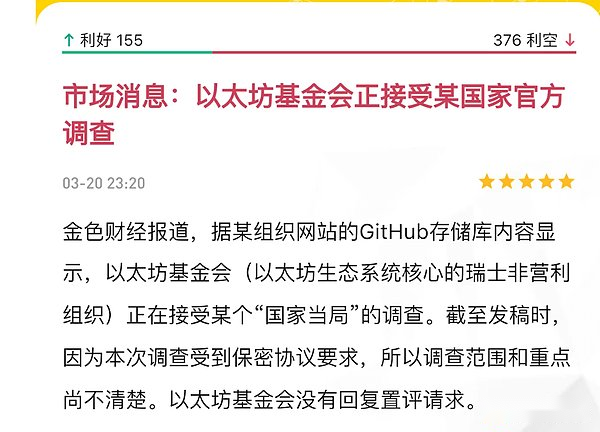
2. Bitcoin-related data
2.1 BTC spot ETF situation
There was a net outflow for 5 consecutive days, but the total outflow began to narrow.
-
ETF Bitcoin Holdings 800,000
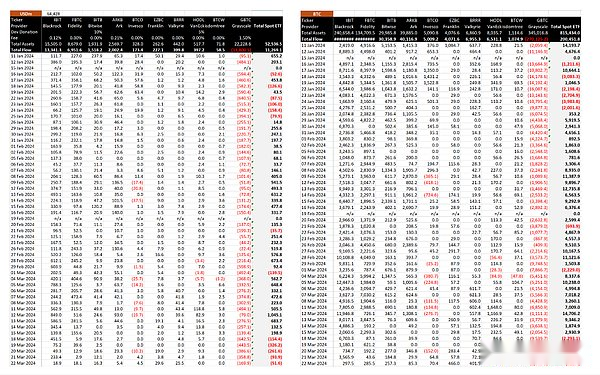

Data source: https://twitter.com/BitMEXResearch/status/1771466088066228227/photo/1
Newly entered ETF investors are very strong, and the selling pressure comes from other Bitcoin owners.In the past 5 days, net inflows of nine new (except GBTC) bitcoin spot ETFs have been around $1.2 billion, but the price has dropped by 8%.GBTC does have outflows, but it’s mainly Genesis selling, but he just swapped GBTC stock for spot BTC, so it’s a neutral event.All in all, ETFs have been a net buyer of BTC and there will be more inflows.
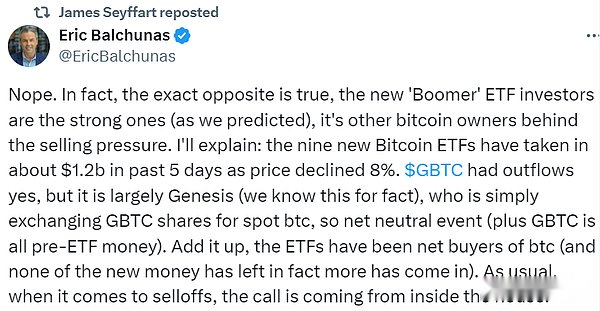
Text source: https://twitter.com/EricBalchunas
Replenish:
Cryptocurrency lending company Genesis declared bankruptcy last year, but was approved by the bankruptcy court on Wednesday, 2.14 U.S. time, to sell approximately 35 million shares of Grayscale Bitcoin Trust (GBTC) worth more than $1.3 billion.The proceeds obtained through this exchange will be used to repay creditors.
Source: https://cn.cryptonews.com/news/genesis-huo-fa-yuan-pi-zhun-chu-shou-yu13yi-mei-yuanbtc-jiftx-qing-suan-hou-zai-mian-lin-mai-ya.htm
2.2 Bitcoin Hold Waves
**16.36%** Bitcoin has not been traded for more than 10 years, and most of this part may be lost Bitcoin.
2100*16.36% = 3.4356 million Bitcoins

Data link: https://www.lookintobitcoin.com/charts/hodl-waves/
3. What reasons will Ethereum spot ETF be rejected?
-
Application status of Ethereum spot ETF
-
Ethereum is defined as a securities
-
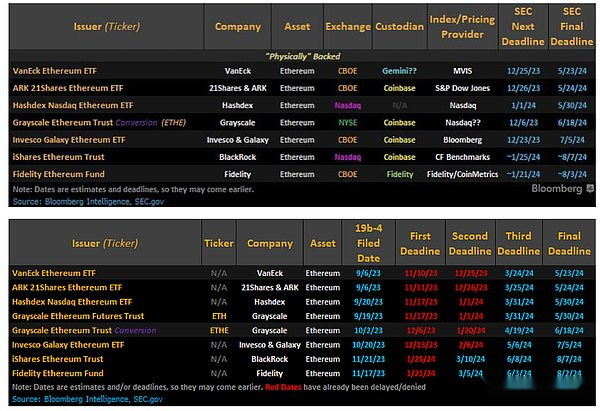

According to the GitHub repository of the organization’s website, the Ethereum Foundation, the Swiss nonprofit at the heart of the Ethereum ecosystem, is facing questions from unnamed “national authorities.”
The confidential investigation comes at a time when Ethereum technology changes and its home-based asset, ETH, may face a turning point, with many U.S. investment companies seeking to offer it as an exchange-traded fund.Despite the recent approval of a series of Bitcoin ETFs, the Securities and Exchange Commission’s (SEC) efforts have been slow.
After this article was published, Fortune reported that the SEC is seeking to classify ETH as a securities, a move that will have a significant impact on Ethereum, ETH ETFs and cryptocurrencies as a whole.Financial regulators have issued subpoenas to U.S. companies in the past few weeks, Fortune reported.
If there is a suitable explanation that can make Ethereum defined as “securities”, then Ethereum’s current disclosure level and materials will definitely not be passed.But Gary himself said in disguise that Ethereum is a commodity, not a securities, and the Ethereum futures ETF has been passed.
In addition, if Ethereum is defined as “securities” and then passed, it will have a demonstration effect on other cryptocurrencies that have been defined as “securities”, so it is not completely a bad thing if it is not passed on May 24.
In the lawsuit Coinbase, the SEC identified SOL, ADA, MATIC, FIL, SAND, AXS, CHZ, FLOW, ICP, NEAR, VGX, DASH and NEXO tokens as securities.
In the lawsuit Binance, the SEC listed SOL, ADA, MATIC, FIL, ATOM, SAND, MANA, ALGO, AXS and COTI as securities.
Cryptocurrencies are defined as securities and commodities, meaning they will be governed by different regulatory frameworks and laws, depending on which one they are classified as.It is important to understand this because it will affect how cryptocurrency businesses and investors operate, profit patterns and compliance requirements.
-
Cryptocurrency as security: When a cryptocurrency is defined as a security, it is usually based on the so-called “Howey Test”, a criterion determined by the U.S. Supreme Court to determine whether an investment isfor securities.If a cryptocurrency project involves investors’ funds being invested in a common business, expecting to gain benefits through the efforts of others, then the cryptocurrency may be considered a security.As a result, it will be strictly regulated by the Securities and Exchange Commission (SEC) and other relevant financial regulators and must comply with a range of legal requirements including registration requirements, disclosure requirements and other investor protection regulations.
-
Cryptocurrencies as Commodity: On the other hand, if cryptocurrencies are more regarded as commodities, such as Bitcoin and Ethereum, which are widely considered decentralized and not controlled by any particular entity, they are moreMay be considered a commodity.Commodities are often defined as basic physical resources that can be used to trade, invest or consume.In the United States, this means they will be regulated by the U.S. Commodity Futures Trading Commission (CFTC).This involves different rules and regulatory methods, focusing on market integrity, preventing manipulation and fraud, etc., rather than registration and disclosure requirements like securities.
Summary: Cryptocurrencies are classified as securities or commodities, meaning they will face different regulatory structures and compliance requirements.This classification affects how cryptocurrencies are sold, traded and held, and how related businesses operate.It is extremely important for investors and entrepreneurs to understand how cryptocurrencies are regulated and what this means to their obligations and responsibilities.
-
Ethereum spot ETFs are not discussed and communicate frequently like Bitcoin spot ETFs have passed in the past few months.
The main basis for judgment of Bloomberg’s James Seyffart (one of the big guys who predicted that Bitcoin spot ETFs would pass) is that the SEC did not have any application with Ethereum spot ETFs like those applicants before and the Bitcoin spot ETF applications were approved in a few months.Frequent communication.
Not a professional analysis.
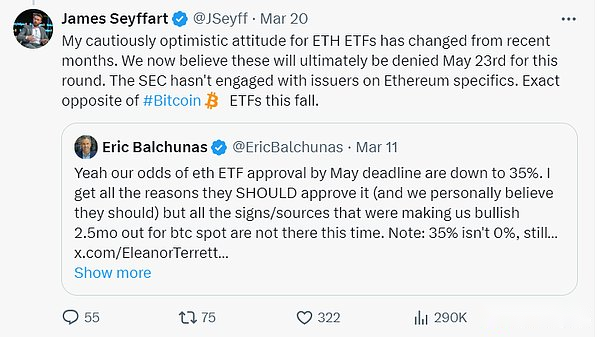
Personal speculation:
-
Is there a possibility that most of the problems have been solved in the months of frequent discussion of BTC spot ETFs, resulting in Issuers’ materials being highly duplicated when applying for Ethereum spot ETFs, so there is no need for too much discussion.
-
The SEC did not find strong evidence to refute it, just like it was impossible to refute the passage of BTC spot ETFs
-
Ethereum’s economic model is not an absolute deflation model, not an absolute decentralization
The economic model of Bitcoin’s reward of half of the number of blocks is an absolute deflation model, but Ethereum is not.
Regarding the issue of Ethereum centralization In the application materials for Ethereum Futures ETF, the only mention is the price fluctuations caused by Ethereum hard fork and the fluctuations of various financial products. In fact, I think this is for Ethereum researchAn incomplete manifestation.The degree of decentralization has a great weight on whether the product can be manipulated by the market.
Reference: Valkyrie ETF Trust II
The deflation of Ethereum’s economic model is because each transaction occurs, part of the transaction fees will be destroyed, resulting in a decrease in supply.If transaction volume on the Ethereum network continues to increase and transaction fees grow faster than the destruction rate, then the total supply of Ethereum may begin to increase, i.e. no longer deflation occurs.This may occur when network activity increases, transaction fees increase, or other factors cause destruction speed to be insufficient to offset new supply.
For example, the period from August 2023 to November 2023 in the figure.

Image source: https://ultrasound.money/
If you dig deeper, the matter between Ethereum PoW and PoS is not controlled by SEC, but decided by the Ethereum Foundation headed by V God. One of the ultimate things about Bitcoin is the complete delegation of power by the founding team., I still don’t know who Satoshi Nakamoto is.
This leads to Ethereum being able to manipulate inflation/deflation progress through some methods, such as:
-
EIP-1559 Change: EIP-1559 is a proposal on the Ethereum network that introduces the concept of base fees and uses it to destroy ETH.If the implementation of EIP-1559 is adjusted in the future, such as reducing the destruction ratio or completely canceling the destruction mechanism, then the supply of Ethereum will no longer be reduced.
-
Changes in the issuance mechanism: Ethereum issuance is controlled by a variety of factors, including mining rewards, pledge rewards, etc.If Ethereum’s additional issuance mechanism changes in the future, such as increasing mining rewards or adjusting staking rewards, the supply of new ETH will increase, which may also stop Ethereum’s deflation trend.
-
Technology or protocol updates: The Ethereum community may update protocols through hard forks or soft forks, which may affect the supply and destruction mechanism of ETH.For example, if new technologies emerge that can reduce transaction costs or change the way transaction fees are allocated, it may affect the supply of ETH.
To put it jokingly, is LTC easier to pass?In a sense, it is indeed the case.
-
Both PoS and PoW are at risk of being manipulated by the market, and there is no better or worse (and the more unecotched PoW has been passed)
Proof of Stake (PoS) and Proof of Work (PoW) are two different consensus mechanisms, which have their own characteristics in resisting market manipulation.
In the PoS system, the verifier must lock a certain number of tokens as collateral to participate in the generation and verification of blocks.If validators try to cheat or engage in malicious behavior, the tokens they stake may be confiscated, which is called “staking punishment”.This mechanism can theoretically improve the integrity of validators because they have greater economic incentives to maintain the security and stability of the network.Therefore, PoS may be more difficult to suffer from the situation where a single entity controls the network through computing power compared to PoW in some cases.
However, PoS systems also face their own manipulation risks.For example, if a validator or a few validators have a large number of staked tokens, they may gain disproportionate control over the network, which is called “staking centralization.”This centralization may lead to excessive concentration of power, thereby increasing the risk of manipulation.Furthermore, since validators in PoS systems often receive transaction fees and/or newly minted tokens as rewards, this may attract wealthy individuals or entities to participate, further exacerbating the centralization problem.
In the PoW system, miners compete to generate new blocks by solving complex mathematical problems, which consumes a lot of computing resources and energy.In theory, PoW systems resist manipulation through dispersed computing power distribution, because any behavior that attempts to control most of the network computing power will be very expensive and difficult to achieve.However, if a miner group (mining pool) controls more than 50% of the network’s computing power, they have the ability to conduct a double payment attack, that is, confirm two different transaction branches at the same time, thereby destroying the security and integrity of the network.
Overall, PoS and PoW have their own advantages and disadvantages, and both have potential market manipulation risks.Which consensus mechanism to choose depends more on community preferences, project specific needs, and tradeoffs on security and decentralization.
Of course, except for Ethereum, any project except Bitcoin basically has insufficient decentralization. Many people think that SOL will be the next one after the Ethereum spot ETF passes, but no one mentioned the Solana nodeThey are all enterprise-level nodes, and the possibility of doing evil is far greater than that of Ethereum, and this does not consider that the possibility of doing evil is far greater than that of Bitcoin.
4. Grayscale
4.1 Latest Applications About ETHE
Grayscale requirements:
-
Allow ETHE to redeem (to put it bluntly, spot ETF)
-
Allow Ethereum in the trust to be pledged (this is more radical)
14A refers to Form 14A of the Securities and Exchange Commission (SEC), which is a specific form of document, commonly known as a proxy statement.When a company is preparing to hold a general meeting of shareholders, or involves any matter that requires shareholders to vote, it must submit this document to the SEC and send it to its shareholders.The Proxy Statement provides detailed information on upcoming meetings and voting matters, including but not limited to:
-
Upcoming election of board members
-
Executive Officer’s Remuneration Information
-
Major decision-making proposals, such as mergers, acquisitions, changes in the articles of association, etc.
-
Voting guidelines recommended by the board
-
Corporate Governance Related Information
-
Potential conflicts of interest or other important information related to company management The purpose of the proxy statement is to ensure that shareholders have sufficient information when making a voting decision.This is a mechanism to protect investors’ rights and interests and ensure transparency in corporate governance under the framework of US securities laws.This transparency required by the SEC helps shareholders make informed decisions about the company
Grayscale’s latest 14A, GRAYSCALE ETHEREUM ETF enables the trust to pledge Ethereum held by the trust and collect the consideration associated with it to realize the ultimate interest of ETHE shareholders.
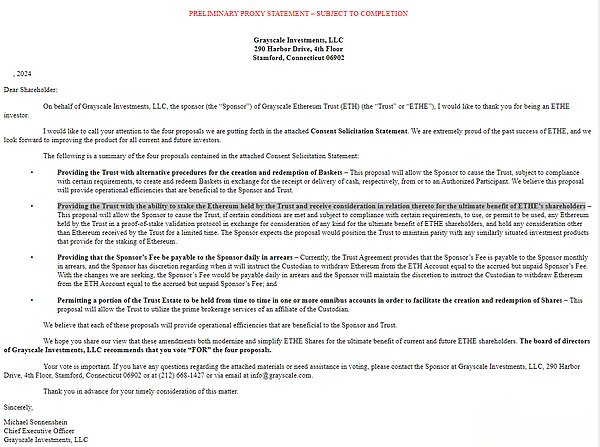
Link: https://www.sec.gov/Archives/edgar/data/1725210/000095017024033515/ethe_pre_14a.htm
ETHE is worth less than US$10 billion (compared with Grayscale’s peak market value of Bitcoin: 600,000 * 70,000 = US$420 billion, current market value: 350,000 * 70,000 = US$245 billion), it can be seen that the ETF spot passesThe impact on the market may not be so severe.

4.2 Bitcoin Holdings
Grayscale Bitcoin holdings have dropped from the initial 600,000 to 350,000.
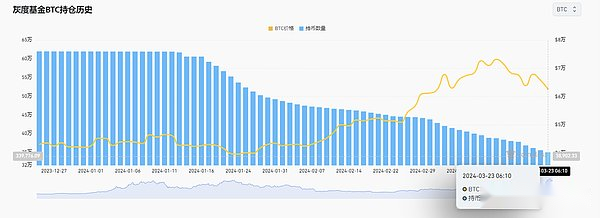
Data source: https://www.coinglass.com/zh/Grayscale




